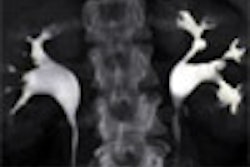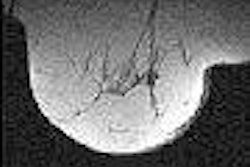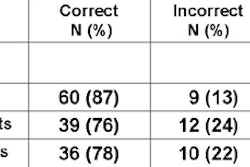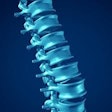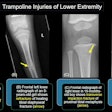Routine postoperative x-rays don't impact treatment decisions and aren't cost-effective in patients who have undergone uncomplicated lumbar fusion, according to a retrospective study presented at the 2005 meeting of the American Academy of Orthopaedic Surgeons in Washington, DC.
"The major clinical implication of the study, looking at a cohort of patients recovering from lumbar fusion, is that plain routine x-ray didn't provide additional information or assistance in making any decisions concerning how to treat these patients," stated Dr. Stephen Brockmeier, co-author and an orthopedic resident at Georgetown University in Washington, DC, at the time of the study.
Brockmeier and colleagues reviewed data on 77 adult patients, all of whom had undergone 1-, 2-, or 3-level posterior lumbar fusion at least one year prior to the study. The patients suffered from degenerative disorders and underwent fusions with pedicle screw instrumentation and iliac crest autograft, performed by senior author Dr. William Lauerman.
Researchers examined the medical charts for all patients, looking at whether each patient's pain and functional impairment were regarded as normal or excessive at the time of their follow-up visit. They compared patients' functional ability or impairment and pain levels to those usually seen during the one year following the surgical procedure.
They then examined the charts of patients who had "normal" levels of pain and functional impairment to note whether a routine radiograph was preformed and whether the results of the x-ray influenced the treatment decision-making.
The investigators found that clinicians ordered x-rays during follow-up visits for 70 of the 77 patients, and these patients made 286 visits to their doctor. Of these, 243 visits were classified as normal or uncomplicated in terms of patient pain level and functionality. Clinicians obtained 201 routine radiographs during these follow-up visits, but none of these x-rays impacted clinical decision-making at the time of the visits, Brockmeier said.
"In this situation, given the fact that x-rays were not definitive and routine x-ray didn't help at all, our recommendation is that routine x-ray at every postop visit may not be an economic or frugal use of resources," he concluded.
By Jerry Ingram
AuntMinnie.com contributing writer
March 22, 2005
Related Reading
The lowdown on lumbar spine positioning, June 19, 2003
MR Imaging of the Lumbar Spine: A Teaching Atlas, June 19, 2003
MRI no better than x-rays in management of low back pain, June 5, 2003
Copyright © 2005 AuntMinnie.com




